MOCORITO, SINALOA, MEXICO — The state of Sinaloa is a narrow strip of land hugging 650 km of coastline in northwestern Mexico that makes up 3% of the country’s land mass, 2% of its population and a hefty 30% of its food production.
But the state — bordered on the east by the Sierra Madre Occidental Range — may soon become as synonymous with mineral wealth as it is with agriculture, if Governor Mario Lopez Valdez has his way.
The self-made businessman — who grew up poor, but developed a chain of hardware stores after playing minor league baseball — wants to encourage more foreign companies like McEwen Mining (MUX-T, MUX-N) to build mines in his home state.
At a celebration in January marking the start of commercial production at McEwen Mining’s El Gallo I mine, Valdez described the event as a historic moment in the evolution of Sinaloa and Mexico, and pledged his support for the open-pit operation, which employs 400 people from surrounding communities. “We want to make the commitment that you do well,” he said to president and CEO Rob McEwen. “Thank you for your trust in us. We will back you up.”
El Gallo I, which the company inherited in 2007 after acquiring Nevada Pacific Gold, would average production of 30,000 oz. gold a year over a mine life of seven and a half years, at cash costs of US$800 per oz. The mine was built on time and at a cost of $13.5 million — 10% under budget.
“It’s a start,” McEwen told The Northern Miner after meeting with analysts and media, and posing for photos holding a 400 oz. doré bar.
As McEwen suggests, El Gallo I is just the warm-up act. The company plans to build a second mine 8 km northwest of El Gallo I that it’s calling El Gallo II.
El Gallo II will contribute another 105,000 oz. gold equivalent for a total of 135,000 oz. gold equivalent per year, starting in the second half of 2014. Management anticipates having all three of the permits it needs to start building the mine before October.
McEwen Mining’s senior vice-president Ian Ball — who, along with his team of prospectors, is credited with making the El Gallo II discovery in 2009 — still marvels that so little modern exploration has been done in Sinaloa.
“Phase two shows there are discoveries that are just sticking out of the ground waiting to be had,” he says. “Sinaloa has been so under-explored that there are still deposit outcroppings that no one has found.”
The states of Sonora to the north, Chihuahua and Durango to the east and Nayarit to the south have seen more mineral exploration over the years than Sinaloa has. But the coastal state is trying to make up for lost time, and according to figures from Sinaloa’s Ministry of Economic Development, there are 66 companies conducting exploration programs here. Of those, 53 are foreign and 57% are Canadian.
“This is a well-endowed part of the country, in terms of gold and silver mineralization,” John Read, McEwen Mining’s senior geologist, told a group of visitors that had flown from Toronto earlier in the day to attend the opening ceremony at El Gallo I. Before landing at the airport in Culiacan — Sinaloa’s capital city, 100 km southeast of the mine — the visitors, split into groups on two private jets, circled the El Gallo complex from the air.
Cradled in the foothills of the Sierra Madre mountains, the silver-rich El Gallo II mine will average annual production of 5.2 million oz. silver and 6,100 oz. gold in the first six and a half years, at a cash cost of US$9.86 per oz. silver net of gold by-products and including royalties, according to a feasibility study completed in September 2012.
The open-pit mine would cost $180 million to build, and payback on an after-tax basis is expected to take a little more than two and a half years at US$25 per oz. silver and US$1,415 per oz. gold. At spot prices the payback period slips to under two years. El Gallo II’s after-tax net present value is estimated at US$118 million, and its after-tax internal rate of return is calculated to be 26% at a 5% discount rate.
The entire El Gallo complex spans 2.02 sq. km, and in addition to the El Gallo I and II mines, the company is exploring nine other prospects. Two of these, and the most advanced — Haciendita and Mina Grande — are located 10 km north of El Gallo II. The exploration projects are not part of the mine plan for El Gallo II, but could become feeder projects to a central mill in the future.
Mina Grande was known to previous operators and historic workings suggest it hosted small-scale production, but Haciendita was a grassroots discovery by one of McEwen Mining’s four prospecting teams in 2010.
Haciendita has an inferred resource of 1.25 million tonnes grading 26.2 grams silver per tonne for 1.06 million contained oz. silver and 0.91 gram gold per tonne, for 36,421 contained oz. gold. Mina Grande has an inferred resource of 2.71 million tonnes grading 28.8 grams silver for 2.51 million contained oz. silver and 0.70 gram gold, for 61,130 contained oz. gold. Both resource estimates were based on a cut-off grade of 0.44 gram gold equivalent per tonne.
To keep exploration costs down, the company uses blast-hole drills as initial scouting tools, some of which can drill to depths of 90 metres, Read says, “which allow us a pretty good initial look into the subsurface.”
The company also makes good use of man-portable core rigs in place of larger, truck-mounted drills. These drills have a smaller footprint and can be set up on a pad that measures 4 by 4 metres. They can also be taken apart and hand-carried to site, which avoids cutting trees and building roads, and expedites the permitting process by dodging various paperwork indicating a change of land or soil use. “We can permit these drill sites in as little as one or two days,” Read says. “So it gives us a lot of flexibility, and the fact that they can be hand-carried also means we can get to some pretty remote places.”
The Haciendita deposit is located on the easternmost portion of the two project areas. Mineralization is open to the northeast, and much of what has been identified so far lies at or near-surface, dipping moderately. Highlighted intercepts from recent drilling include 16.4 metres grading 2.07 grams gold per tonne and 17.8 metres of 1.78 grams gold.
Drilling at Mina Grande, meanwhile, has returned intercepts of 4.7 metres of 12.35 grams gold, including 1 metre of 44.1 grams gold; 12.5 metres of 6.43 grams gold, including 1.2 metres of 49 grams gold; and 5.1 metres of 5.72 grams gold, including 1.3 metres of 18.6 grams gold.
The geology of the region is dominated by a sequence of andesitic volcanic rocks, with a series of shallow-level intrusive rocks that penetrate the volcanic sequence. Read explains that each deposit in the El Gallo complex is different, but that there is a common structural trend of northwest- and northeast-striking faults and mineralized zones. Each of the deposits are also said to host quartz veins, stockwork zones and breccias. Many of them are low-angle and dip shallowly, which make them attractive for open-pit mining.
Production started in the Samaniego pit in September 2012 at El Gallo I. The mine plan also includes Sagrado Corazon, and the Lupita pit to the south. Recent drilling at Lupita has returned intercepts of 12.8 metres grading 3 grams gold per tonne, including 1.1 metre of 23.3 grams gold; and 46.1 metres of 2.1 grams gold, including 5 metres of 9.9 grams gold. “In addition to extending the resources along strike and at depth, we’re hitting some decent high grade, but it remains to be seen how deep it can go,” Read says of the Lupita pit. “Given the grades we’re encountering, underground mining is within the realm of possibility.”
Lawrence Scharf, a sh
areholder and long-time friend of McEwen, says the company represents “a good-quality junior company,” and that El Gallo “is a nice, producing asset” that has “significant exploration potential,” and a “huge land package.” He also points out that the state of Sinaloa is “friendly” and that “they have done the right thing, in terms of community relations.”
But like most juniors, he adds, “the market isn’t paying for the future much, let alone the present.”
“If you’re not doing it big and profitably, the market doesn’t want to hear about you,” he continues. “That’s just the state of the market.”
Beyond the dismal environment for juniors, the company is also being held back by its properties in Argentina, Scharf says. “They have these orphaned assets in Argentina. But there are certain restrictions regarding the cash flow, and that limits their options.”
Still, Scharf is bullish on the company’s prospects in Mexico and Nevada and optimistic about its management team, and its ability to get things done.
“Rob is a great leader and a significant investor, and is a great custodian of shareholder value, and he has a vision,” Scharf says. “He had great vision when I talked to him before Red Lake was called ‘Goldcorp.’ He had a vision of what that was going to be, and I’m sure he has a great vision of El Gallo as well, but the market isn’t going to take notice until this thing gets bigger.”
Craig Stanley of Stifel Nicolaus notes that the company had intended to use cash flow from its 49% interest in the San Jose mine in Argentina to pay for development of El Gallo II, but envisions changing its game plan. “Changes by the Argentine government regarding repatriation of export revenues have led management to focus on potentially monetizing the Los Azules copper project to fund the $178-million initial capital expenditure outlined in El Gallo’s phase-two feasibility study,” he writes in a February research report. “The company recently opened a data room and hired an investment bank to facilitate the projects.” But if the process isn’t wrapped up by this year’s fourth quarter, Stanley says the company “will either have to raise funds or put development on hold.”
As of Jan. 14, 2013, McEwen Mining held $68 million in cash after raising $60.4 million in a rights offering in December 2012. The funds are being used to pay for long lead-time items for El Gallo II.
McEwen Mining celebrated its first year of production on Jan. 15, 2013, after being created in early 2012 after combining US Gold and Minera Andes. Its assets outside of Mexico include Los Azules — an advanced-stage porphyry copper-exploration project in Argentina’s San Juan province that it believes is one of the largest undeveloped copper deposits in the world — and a 49% stake in the San Jose mine, a high-grade gold and silver underground operation in Argentina’s Santa Cruz province, about 20 km north of Goldcorp’s (G-T, GG-N) Cerro Negro project. During 2012, McEwen Mining’s attributable production from San Jose was 98,117 oz. gold equivalent (42,026 oz. gold and 2.92 million oz. silver). Hochschild Mining (HOC-L) owns the remaining 51% stake in the mine.
The Toronto-based company also owns 100% of the Gold Bar heap-leach project in central Nevada, where it hopes to start production in 2015. Gold Bar was mined from 1990 to 1994 by Atlas Precious Metals, and is within 56 km of two of Barrick Gold’s (ABX-T, ABX-N) operating mines in the state: Cortez and Ruby Hill.
When asked about the differences between McEwen Mining’s various operational jurisdictions, McEwen says the attitude towards mining is the most interesting.
“Here in Mexico, it’s quite welcoming,” he says. “In Nevada, they seem understaffed on the environmental side. Things take longer [in Nevada], and they go on a track that makes it expensive to permit and build a mine today. And you think: Mexico wants to create jobs because they have a lot of young people. Nevada doesn’t seem to want to create jobs, but the U.S. has high unemployment, and you would think that they’d like to employ these people.”
As for Argentina, he says, the country has not had a lot of experience mining because it has been primarily agricultural and industrial. “I think Argentina has a bad case of envy right now because they weren’t really exploring and mining. There were foreign interests that came in from around the world — explored, found things, things have been sold — and yet the Argentineans are saying: ‘Well, how come I didn’t get any of this?’ They also believe that everybody is making so much money that they can afford to pay an indefinite amount of money.”
By contrast, he admits, Mexico looks good.
“Yes, the media makes you think that you walk anywhere in Mexico and you’re going to get shot. But it’s a large tourist destination, and so obviously a lot of people are finding that side of things pretty good.”
As for exploration upside, he suggests, Mexico has it in spades.
“You used to think of Mexico as having small deposits, but I think it was a function of capital invested that they hadn’t proved up a long life. And now more capital is coming in, and there are discoveries in old camps that are getting bigger, like this one.”
At press time in Toronto, Mc-Ewen Mining was trading at $2.69 within a 52-week range of $2.02 to $5.83.
Stanley of Stifel Nicolaus initiated coverage of the company on Feb. 7 with a “buy” rating and a target price of $3.75 per share.
McEwen Mining has 300.6 million shares, fully diluted.

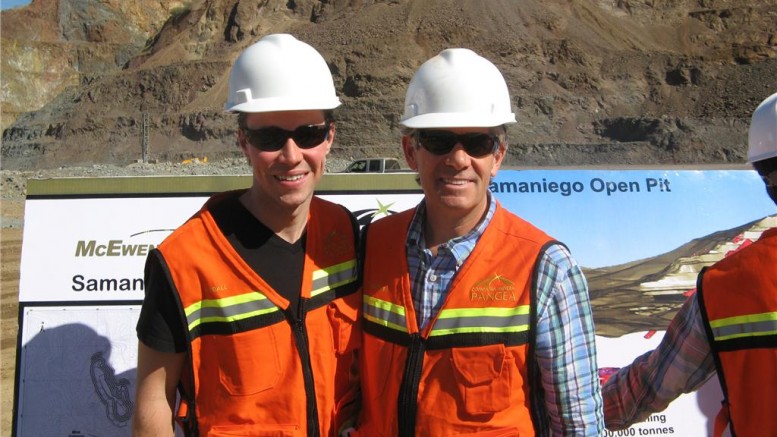
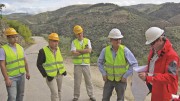
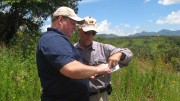
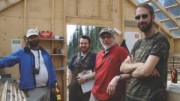
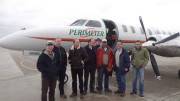
Be the first to comment on "McEwen finds a sweet spot in Sinaloa"